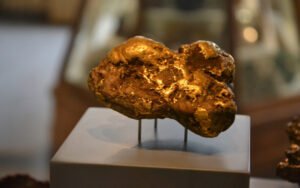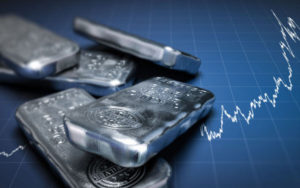Unraveling the Gold Surge: Absence of Traditional Tailwinds Is Bullish for Gold

Last week, the price of gold approached a historic high of nearly $2,200 per ounce. However, when considering factors such as inflation, the actual value of gold is still lower than the previous high set over a decade ago. In other words, if you purchased gold at around $1,675 at the end of 2012, you would still be at a loss of over 3% if you were to sell it now.
However, if we extend the timeframe and broaden our perspective, the new high adjusted for inflation seems within reach. At this point, we cannot ignore the driving factors behind the recent rise in gold prices.
One of the most interesting aspects of this gold surge is that while gold is rising, so are risk assets like the US stock market and even speculative assets like Bitcoin, hitting new highs. This tells us that the gold price rally is not simply the result of a rise in ‘risk-off’ sentiment.
Additionally, traditional drivers of gold price increases, such as a weakening US dollar, declining interest rates, and inflows into gold ETFs, are absent from this current trend. US inflation is receding, weakening the “inflation hedge” logic for gold allocation, while the US dollar index has risen by over 2% so far this year.
From the perspective of gold bears, these factors are evidence that this surge in gold prices lacks support. However, from the bullish perspective, if these factors combine, they could actually be the driving force behind further increases in gold prices. Over the past year, holdings in gold ETFs have been steadily declining. However, the longer gold maintains its high price, the greater the likelihood of trend investors entering the market to buy gold.
The most likely trigger for this reversal in trend is the Federal Reserve commencing a rate-cutting cycle.
The recent significant increase in gold prices has largely benefited from the heating up of rate-cut expectations. Federal Reserve Chairman Powell indicated last week that the Fed is not far from the confidence threshold required to initiate loose monetary policy. The market is currently anticipating a 95-basis-point rate cut by the Fed this year.
If the “dot plot” leans dovish, gold prices are expected to break through the previous inflation-adjusted record of $2,250. However, if the stance leans hawkish and rate-cut expectations cool down, a short-term correction in gold prices may occur.
Meanwhile, the most important force driving the current increase in gold prices, the trend of sovereign gold purchases, is not expected to change in the short term. Since 2024, central banks globally, especially in emerging markets, continue to purchase significant amounts of gold amidst a backdrop of de-dollarization.
Since 2010, emerging market economies have collectively purchased 4,937 tons of gold, compared to only 452 tons by advanced economies.
Federal Reserve
Gold
Interest Rate
Precious Metals








